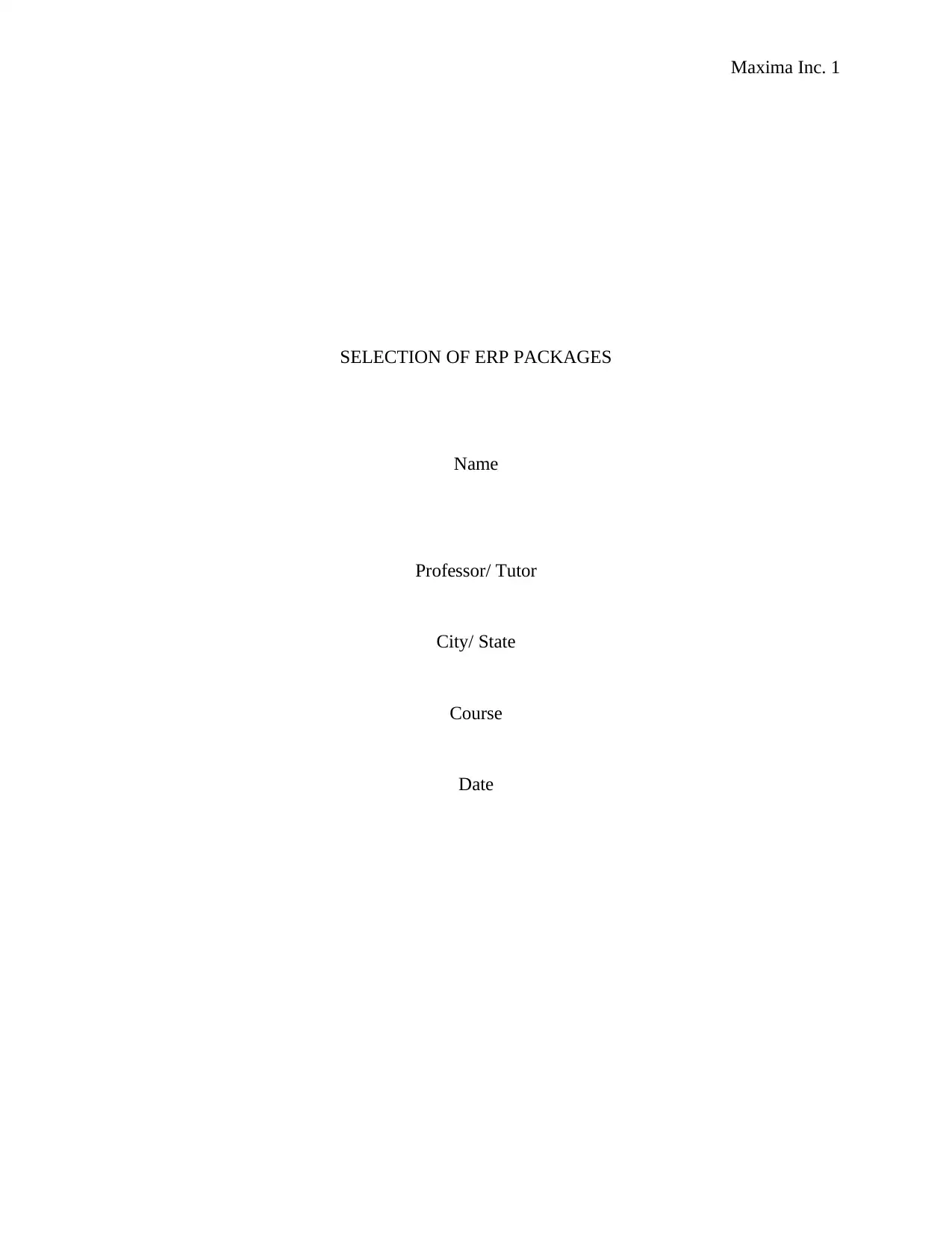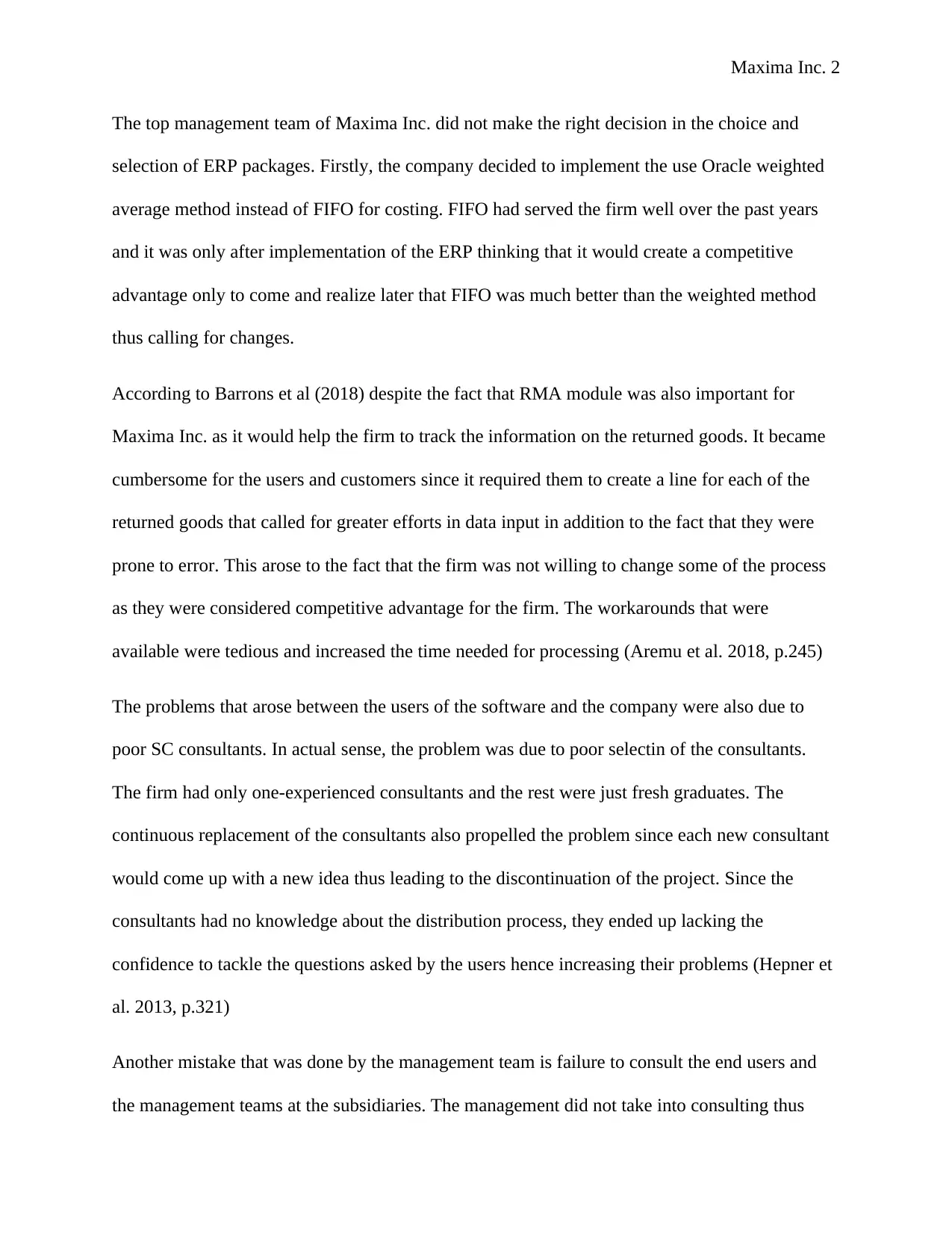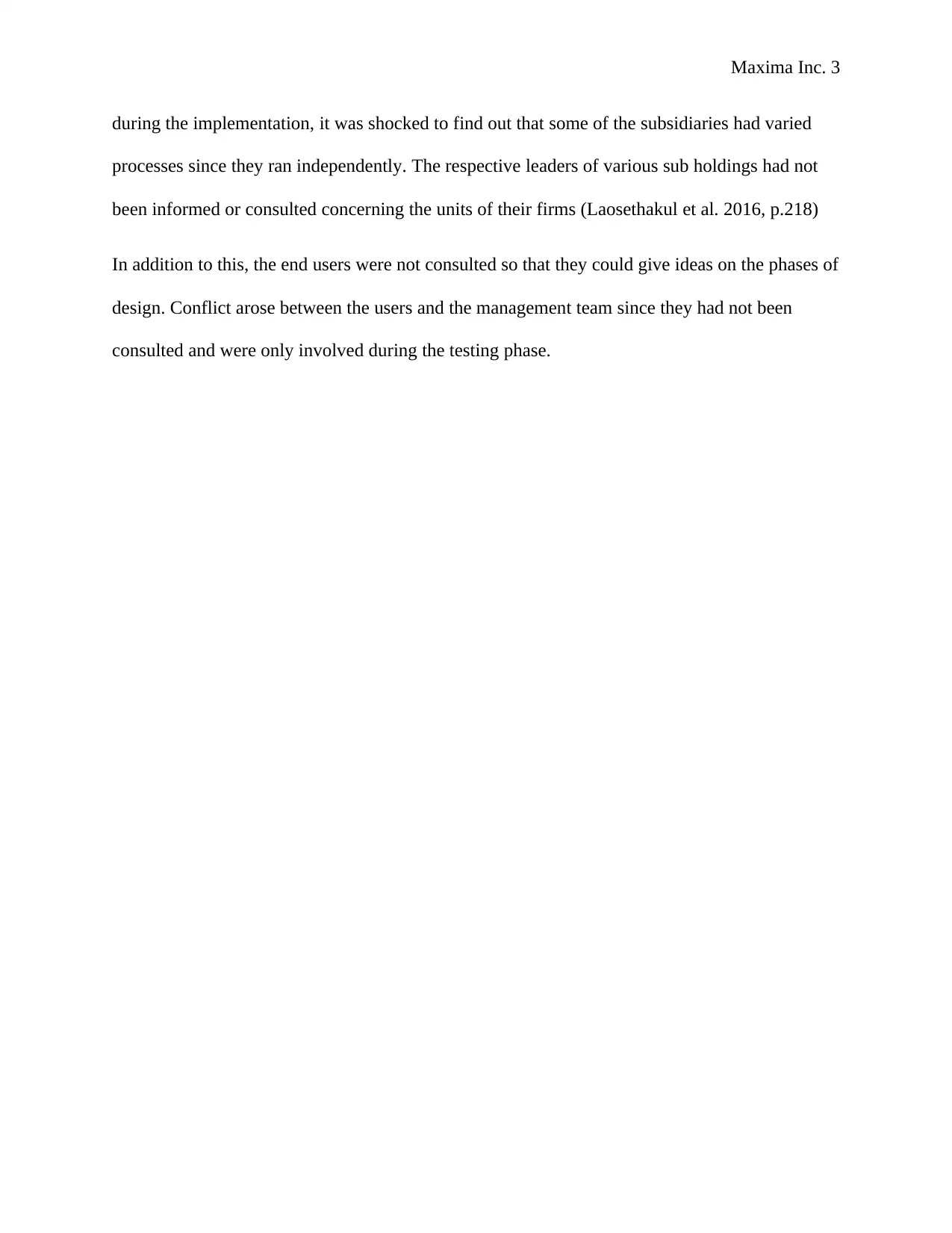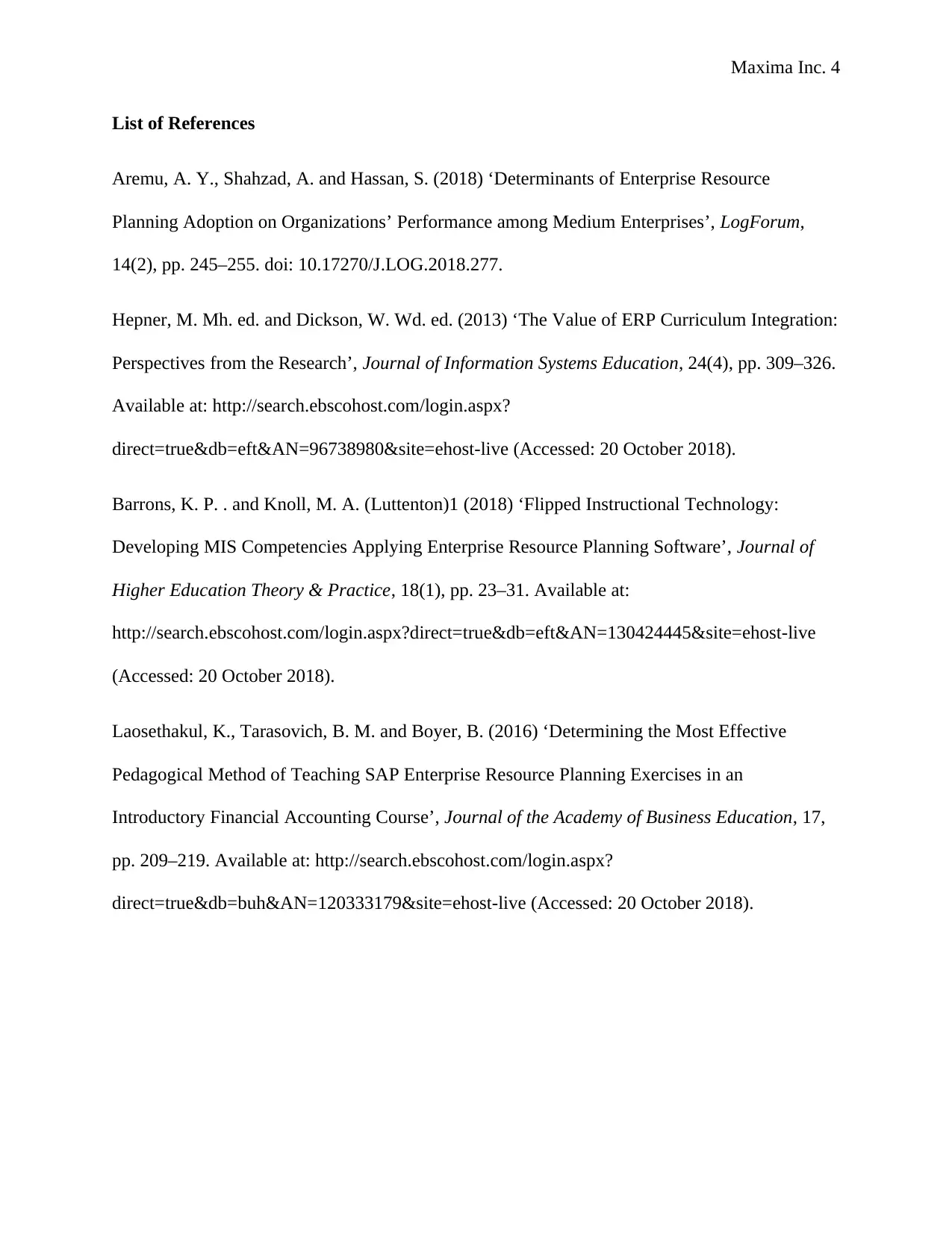Analyzing ERP Implementation Challenges at Maxima Inc.
VerifiedAdded on 2023/06/04
|4
|750
|355
Essay
AI Summary
This essay critically evaluates Maxima Inc.'s ERP package selection and implementation process, highlighting key issues arising from the top management's decisions. It points out the flawed choice of the weighted average costing method over FIFO, the cumbersome RMA module implementation, and the problems stemming from inexperienced SC consultants. The essay also emphasizes the failure to consult end-users and subsidiary management teams, leading to conflicts and implementation challenges. By examining these shortcomings, the analysis underscores the importance of thorough planning, stakeholder involvement, and competent consulting in successful ERP implementation. Desklib provides a platform to access this and many other solved assignments, offering valuable resources and AI-powered study tools for students.
1 out of 4




![[object Object]](/_next/static/media/star-bottom.7253800d.svg)